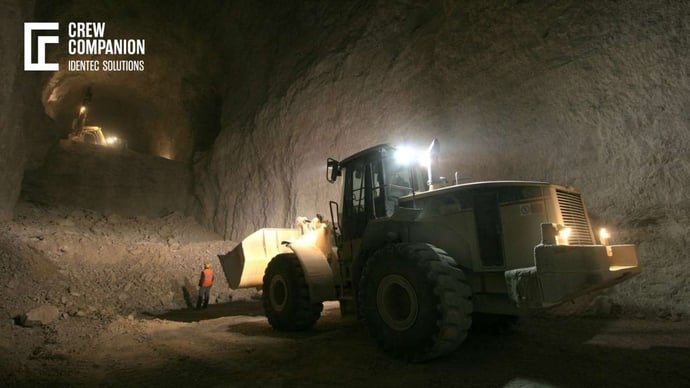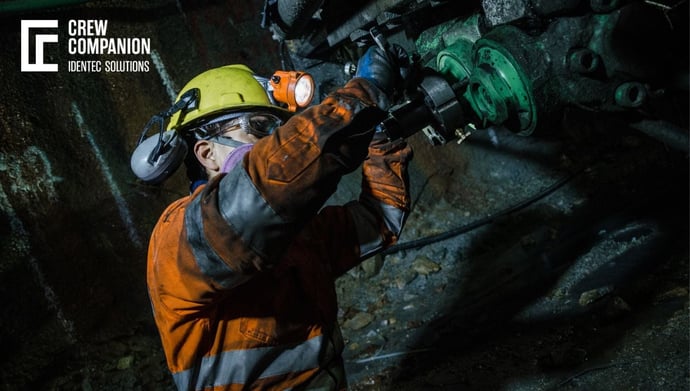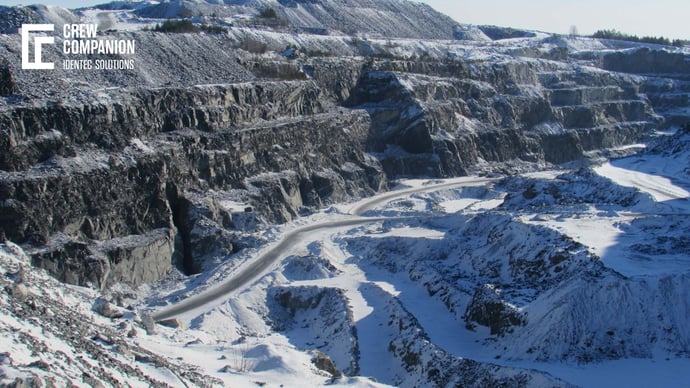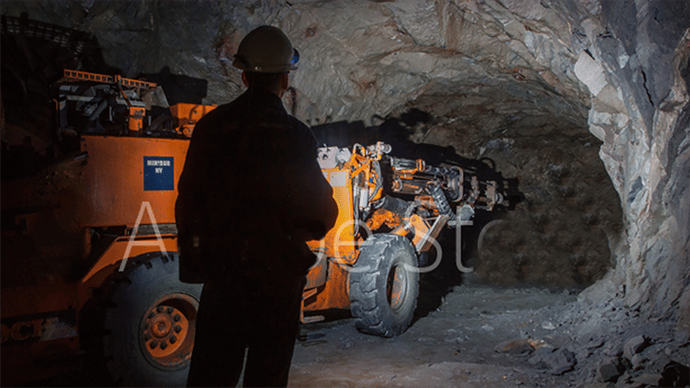LKAB: Operational Reliability and Sustainable Mining
| Written by Mark Buzinkay
For LKAB, it was always the highest priority to know where miners were in the giant underground installation to ensure their safety. That's why LKAB trusts Crew Companion for more than 10 years. A blast won't happen if a miner is unreported or hers or his whereabouts are not visible. This causes a delay in production and creates costs of stopped supply.
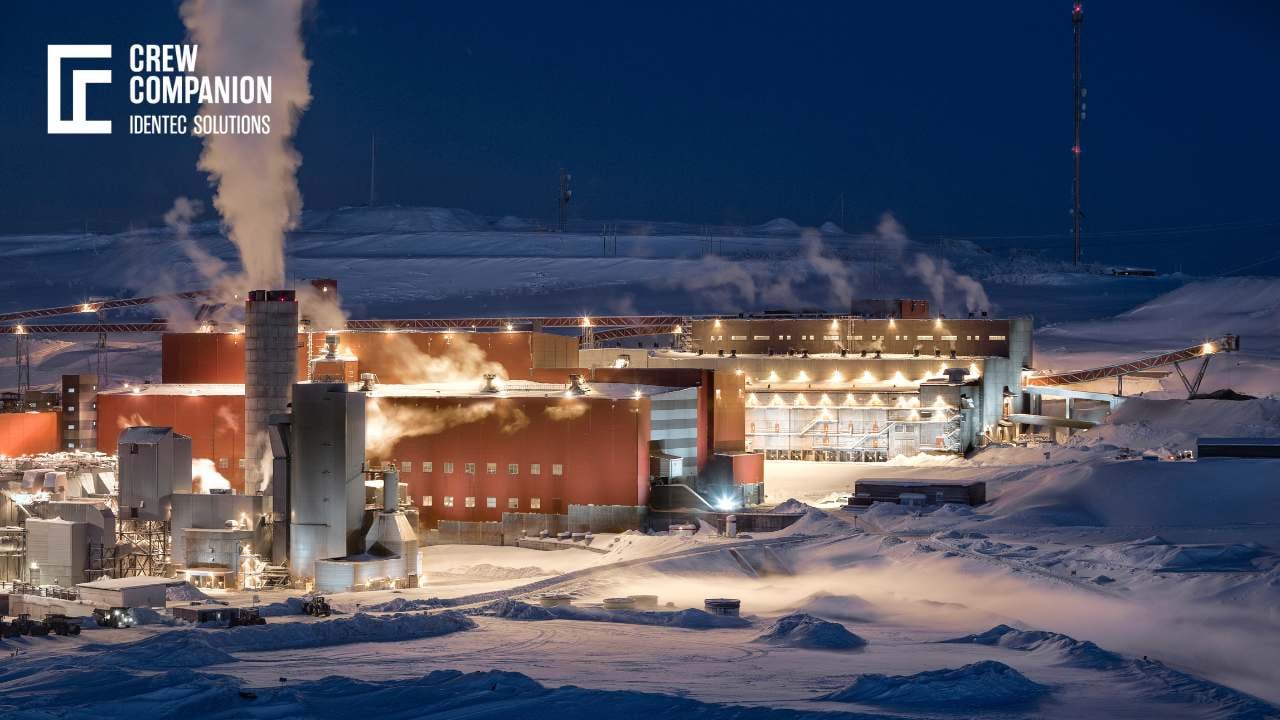
No video selected
Select a video type in the sidebar.
130+ YEARS OF HISTORY
2046. This is the year of the current life expectancy of the Kiruna iron ore reserves at level 1365, which recently increased from about 700 to more than 800 million tonnes. After significant exploration efforts, the resources have increased by 10 per cent compared to 2020. Since the start of mining operations in 1890, LKAB has mined more than 2 billion tonnes in all of its sites in Kiruna, Malmberget and Svappavaara. An absurd big number to swallow.
From the beginning, LKAB was an essential driver of Sweden's industrialisation and a significant part of the country's exports. In 1902, rail links were available from Kiruna to Lulea (Sweden) and Narvik (Norway), making the mine competitive on the global market. Over time, the investments in the mine and the necessary infrastructure like refinery plants, railways and transport grew (since 2018, approx 1.2 billion Swedish Kronor), and the profits.
Today, the so-called waste is valuable enough to be "recycled" for other minerals like phosphate or rare earth metals. As the principal driver of demand for rare earth metals is the green transition, increased demand for powerful permanent magnets used in electric vehicles and wind-power turbines followed. They require, for example, praseodymium and neodymium. These, together with dysprosium, are expected to constitute the most valuable rare earth elements for LKAB, which can become a significant supplier of critical minerals for agriculture and green technology in Europe.
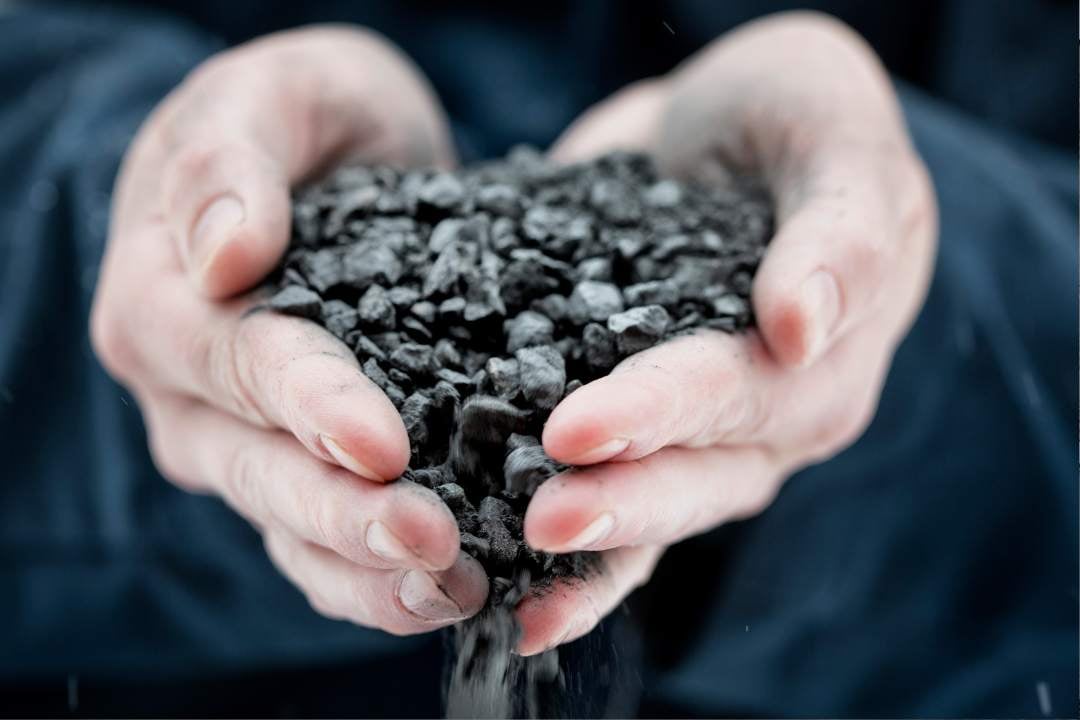
Circular Economy, Sustainable Mining
Today, more than a third of LKAB's industrial minerals business is based on upgrading waste and by-products. Circular business models increase materials efficiency and could become an attractive and increasingly important business in the future. Extracting critical minerals such as phosphorus and rare earth elements from LKAB's existing waste streams requires significant quantities of sulphuric acid. Rather than this being produced from fossil products from oil refineries, LKAB partners with other companies and use their waste streams as raw material.
The main business in Kiruna, Malmberget and Svappavaara is still mining and refining iron ore. The ore body in Kiruna is a large sheet inclined about 60° to the east and is mined between the main levels of 1045 and 1365. Production shafts are drilled deep into the ore body, and the rock is blasted during the night and moved to the crushers and hoisting systems, transporting the ore to the surface and the processing plants. At the end of this giant process, iron pellets are produced and loaded onto trains on their way to export harbours. Ten thousand tons of ore are lifted from the underground to the processing plants every day.
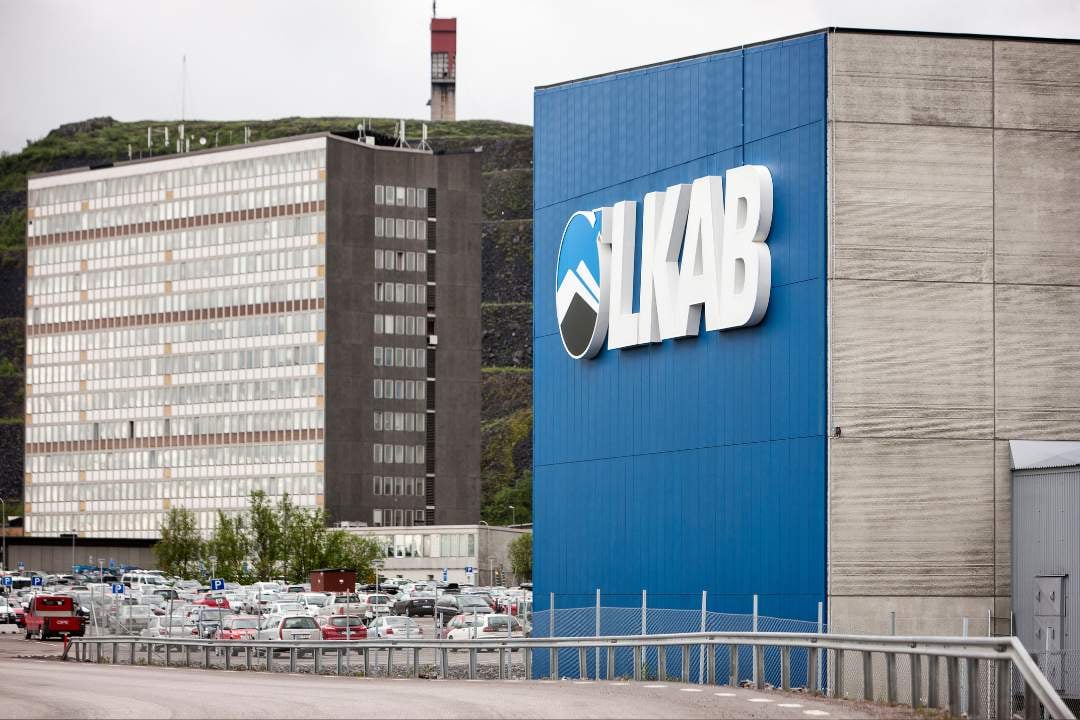
Safety Standards
Mining always bears some risks in terms of occupational safety. In May 2020, an earthquake of 4.9 Mw was triggered in the footwall of the mine. It was induced by the mining activity, a testimonial of the immense tensions in the ore body. At the same time, being one of the world's biggest underground iron ore mines, LKAB in Kiruna is also a high-tech venture. Exploration, production, and safety enable profitable, efficient, and safe mining businesses. The Kiruna Mine is a perfect example.
Sweden's mining industry formed a safety-related commission to discuss and apply safety standards to make the work safer. Consequently, the number of accidents per 1 million working hours dropped from 51,3 (1981) to 6,0 (2020). In response to the high Swedish safety standards, LKAB implemented various measures. It introduced the development of automation and remote control of vehicles, digital positioning systems for people and machines and regular safety exercises.
Many previously performed tasks in underground machines are now remotely controlled by operators at a safe distance. The blasted rock is excavated remotely and moved to be collected in shafts for further transportation by automated trains. Eventually, the safety efforts have yielded results: from 100 accidents per million work hours in 1980 to 6.8 accidents in 2019.
Learn more about miners safety in our latest whitepaper!
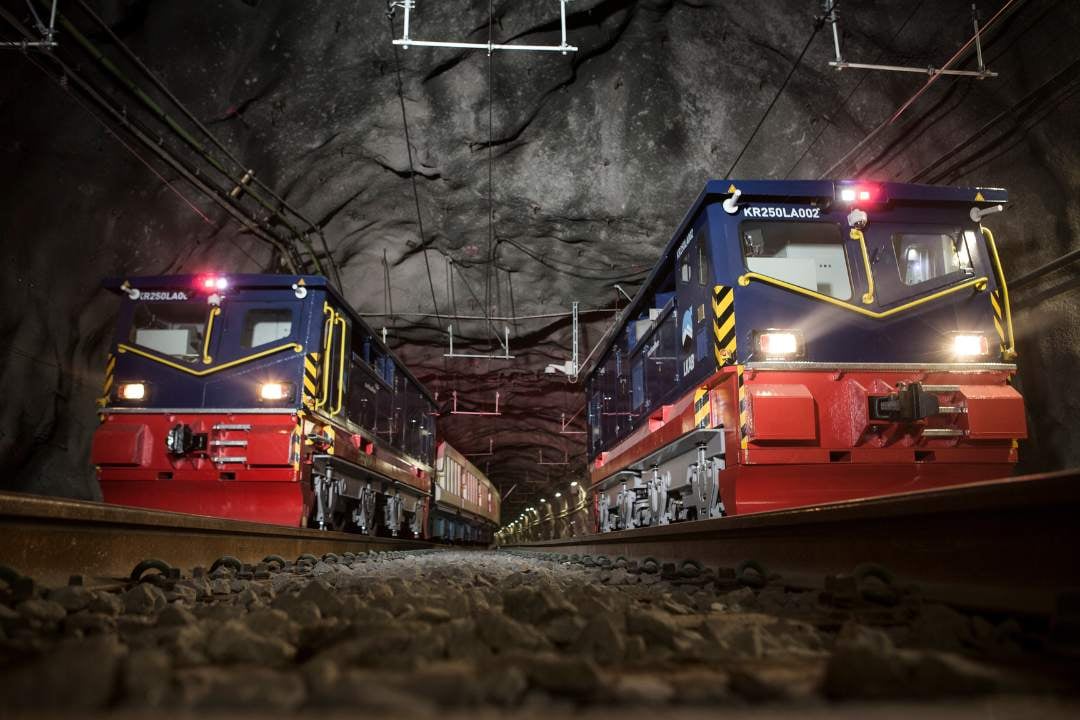
10 YEARS CREW COMPANION
On an individual level regarding safety, LKAB uses a miner tracking solution (Crew Companion) from IDENTEC SOLUTIONS. In general, Crew Companion allows to oversee all of his staff in all mine areas at once and in real-time. Before a blast, all personnel will move out into safety zones before an explosion happens. Everyone remains away for the time hazardous gases and dust are ventilated. Miners return as soon as it is declared safe to finish their work.
For LKAB, it was always the highest priority to know where miners were in the giant underground installation to ensure their safety. A blast won't happen if a miner is unreported or hers or his whereabouts are not visible. This causes a delay in production and creates costs of stopped supply. The threat of injured or missing staff and the loss of profit led LKAB to look for a suitable and 100% reliable solution to cover their monitoring needs.
Tobias Johansson is responsible for different automation projects at LKAB, and Crew Companion is one of them. He has been working for years now for the Swedish mine and saw it growing deeper and deeper. "It is important for me that a system like Crew Companion can grow as the mine expands. We are now at level 1365, and maybe we will go deeper. That's what I like about Crew Companion: I can install the reader by myself, IDENTEC SOLUTIONS adds them to the database, and I start monitoring in new areas immediately."
In 2011, LKAB implemented a mine-wide WiFi with approximately 2,000 access points today. It is primarily used for Wi-Fi calling, vehicle location and navigation. It was also tested for safety and access related purposes, but failed to be a reliable technology. On the contrary, active RFID technology proved to be the right choice for LKAB. IDENTEC SOLUTIONS delivered the technology, which core is still the same after several upgrades. The former Watcher Mine is today's Crew Companion and is the tag a miner needs to enter the mine. It serves predominantly to make everyone visible in hers and his working area and allows access to specific areas for authorised personnel only.
One of the most important performance aspects in Kiruna is the daily shift change. Several hundred people move in and out of the mine in busses at 50 km/h speed. Crew Companion reads all of them and displays them according to the current zone. "Just imagine a manual swiping system", says Johansson, "it would immediately cause long queues at the entrance points. So that's not an option."
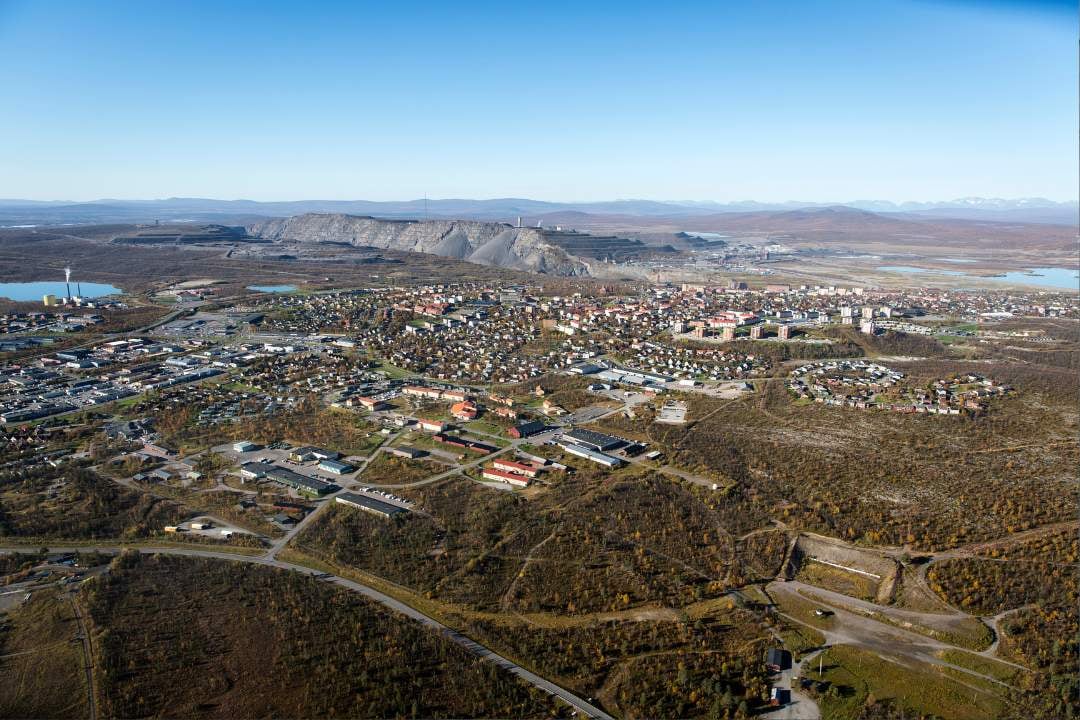
Reliable and sustainable mining
The iron and steel industry accounts for a quarter of the total industry's global carbon dioxide emissions. At the same time, steel demand is expected to increase by 50% by 2050. For LKAB, the challenging task is to produce iron ore responsibly and innovatively. The answer is to be sustainable in every process.
From an environmental point of view, LKAB seeks to become a carbon-free mining facility. The road ahead is steep, but several actions have been taken to achieve this goal: changing the processing and re-inventing the final product (from iron ore pellets to carbon-free iron sponges). It will help to use less energy and from different, renewable sources. At LKAB, mining operations will become carbon-free by 2035 and iron production by 2045.
It is essential to foster social responsibility - expressed in diversity and a safe work environment as an employer. Relying on Crew Companion for ten years is a signal for the future: a safe place for all miners with a reliable solution. "Absolutely", acknowledges Tobias Johansson.
Dive deeper into one of our core topics: Mining Safety

Author
Mark Buzinkay, Head of Marketing
Mark Buzinkay holds a PhD in Virtual Anthropology, a Master in Business Administration (Telecommunications Mgmt), a Master of Science in Information Management and a Master of Arts in History, Sociology and Philosophy. Mark spent most of his professional career developing and creating business ideas - from a marketing, organisational and process point of view. He is fascinated by the digital transformation of industries, especially manufacturing and logistics. Mark writes mainly about Industry 4.0, maritime logistics, process and change management, innovations onshore and offshore, and the digital transformation in general.
Talk to an Expert
Fill out the form below and one of our experts will be in touch. Alternatively, visit our contact page.

